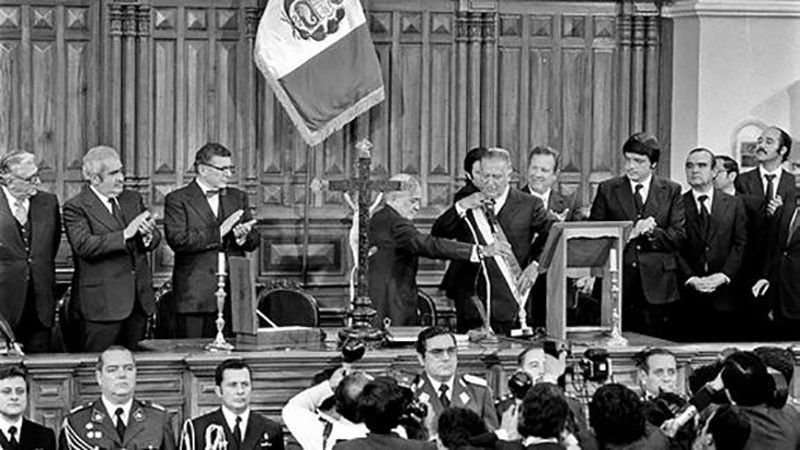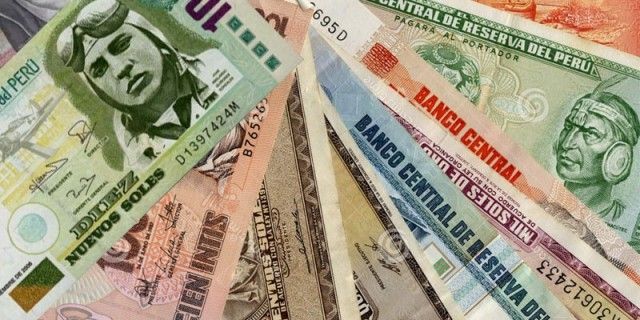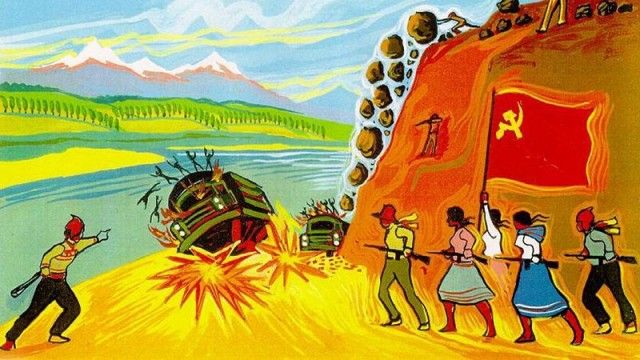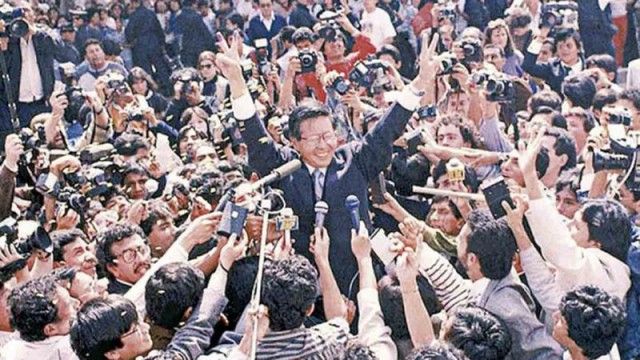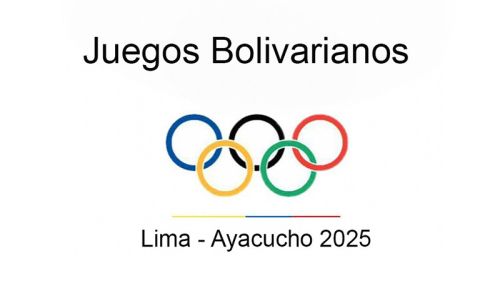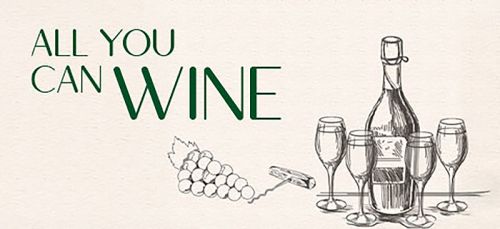After General Francisco Morales moved the Velasco's revolution into a more conservative "second phase" reviving the country's economy by denationalizing certain industries, opening the mining sector to private investors and encouraging foreign investment, he presided over the return to a civilian government under a new democratic constitution. In the following elections in May 1980 President Belaunde Terry was (re-) elected as president of Peru.
President Fernando Belaúnde Terry (II) from 1980 to 1985
The newly elected civilian government of President Belaúnde lifted controls of the press placed by the military dictatorship and ended the agricultural reforms. It implemented free-market policies reducing government involvement and encouraging private enterprises. However, economic problems worsened due to natural disasters (another El Niño hit Peru's fishing industry hard in 1982 - 83), the fall of international commodity prices on the world market and high international interest rates on Peru's foreign loans. In consequence production decreased, wages depressed, unemployment exaggerated and inflation increased dramatically.

The economic situation worsened living conditions for poor Peruvians and provided a breeding ground for social and political discontent. The emergence of the terrorist group Sendero Luminoso (Shining Path) in rural areas followed shortly thereafter by the Tupac Amaru Revolutionary Movement (MRTA) in Lima sent the country further into chaos.
While the administration had to spend ever-increasing amounts to combating the guerrillas and to repairing the damages inflicted in the conflict, the terrorists were partially financed through alliances with the drug cartels, who had established a stronghold in the Peruvian Andes during this period. Peru and Bolivia became the largest coca producers in the world.
Belaúnde's popularity vanished under the stress of extreme inflation (in 1985, the national currency Sol had to be replaced by a new monetary system, the Inti), economic collapse, and mounting terrorism.
President Alan García (I) from 1985 to 1990
In 1985, Alan García, the young and charismatic candidate of the Popular Revolutionary Alliance (APRA), was elected as president. Aged only 36 Peruvian voters were attracted to his youthful charisma and confident optimism. He was even compared to former US president John F. Kennedy. From former governments Garcia inherited an economy in shambles, inflation, capital flight, immense poverty and social unrest.
Garcia tried to reactivate the economy, stop human rights abuses in the fight against the terrorists, and gain control over the drug cartels. But instead of improving the situation, Garcia's impulsive decisions led the country even further into chaos. When Garcia announced Peru would only pay 10% of its export revenue towards its gigantic foreign debt, the IMF (International Monetary Fund) declared the country ineligible for future loans and credits until it offered acceptable debt-repayment measures and implemented more conventional economic policies.
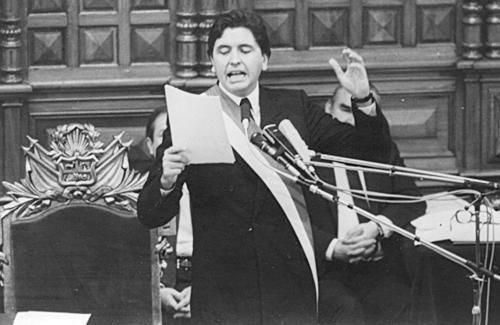
Towards the end of his presidency Garcia had to face a collapsed economy, hyperinflation of the just a few years earlier introduced Inti, a series of general strikes and hostilities against him even from his own party. These turbulences of course as well worsened poverty and social tensions in Peru and contributed partly to the rise in violence acts of terrorist groups (Shining Path and MRTA) destabilizing the country even more. Garcia's answer to solve the problem was military force committing many massacres, even against those who were only suspected of being involved with the Shining Path.
Overall, whatever Alan Garcia touched during his first presidency went from bad to worse. Many believe that the severe economic crisis, the financial isolation of the country, social unrest and violence smoothed the way for an authoritarian regime which his successor Alberto Fujimori would implement in the following years.


